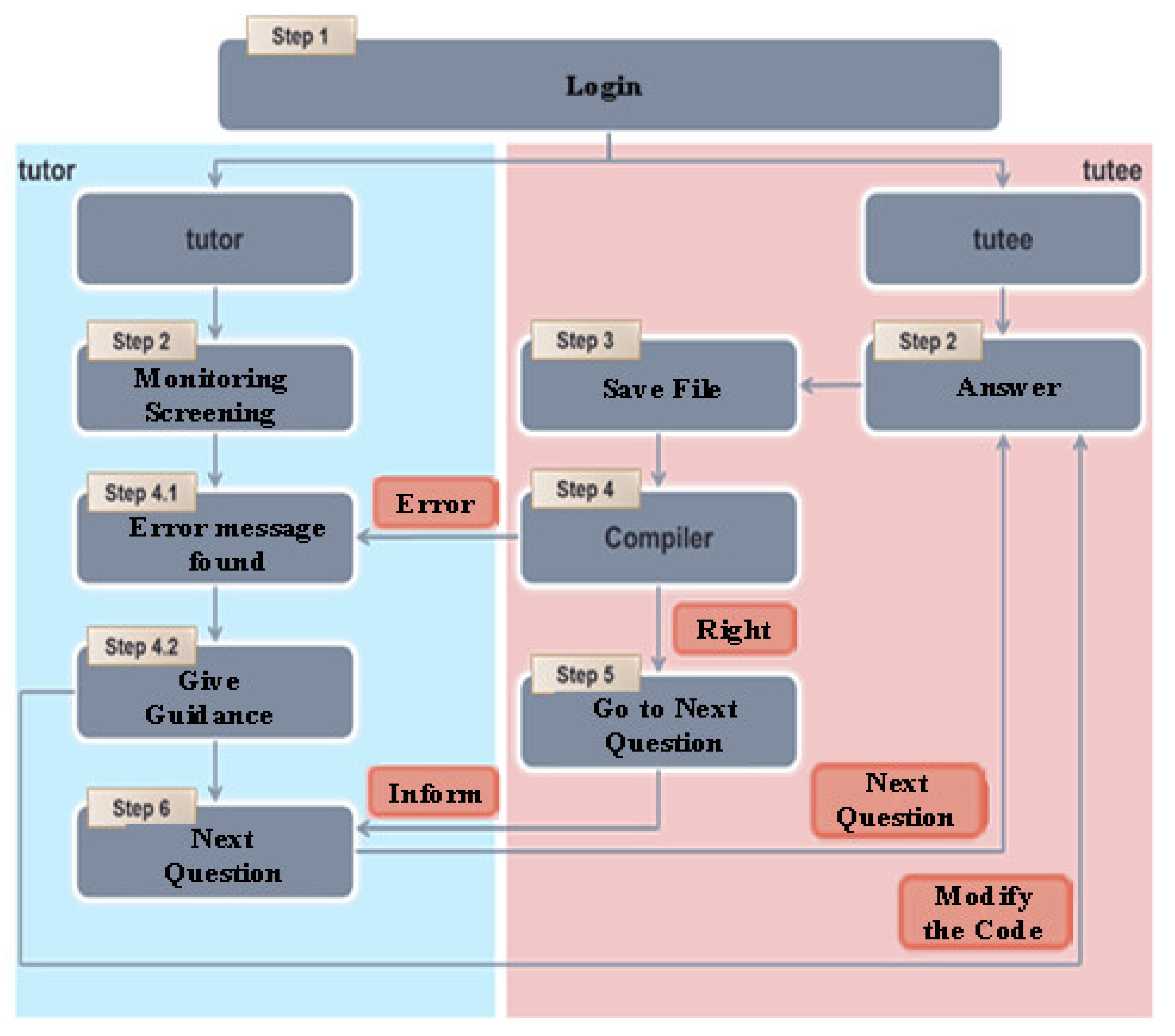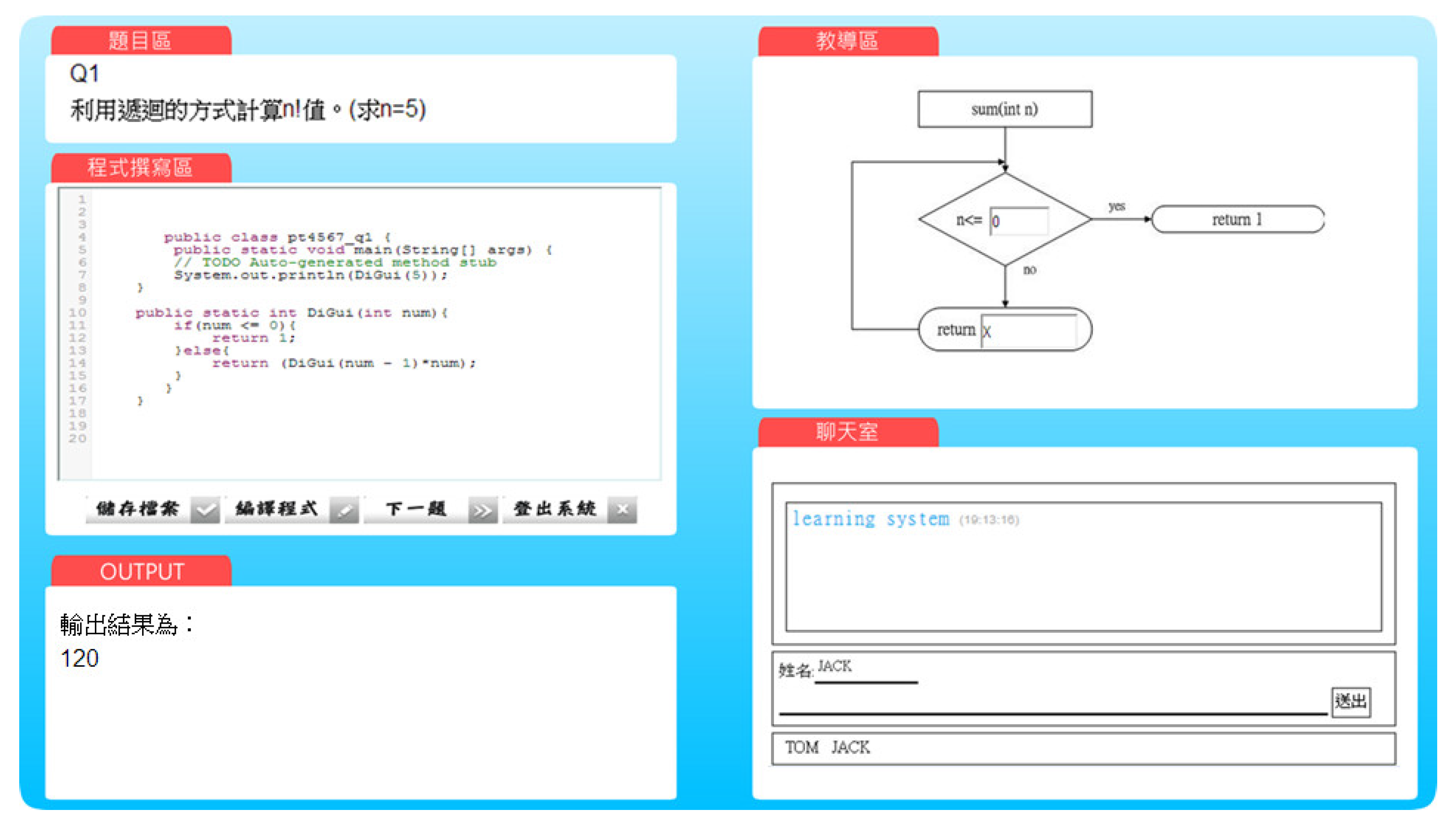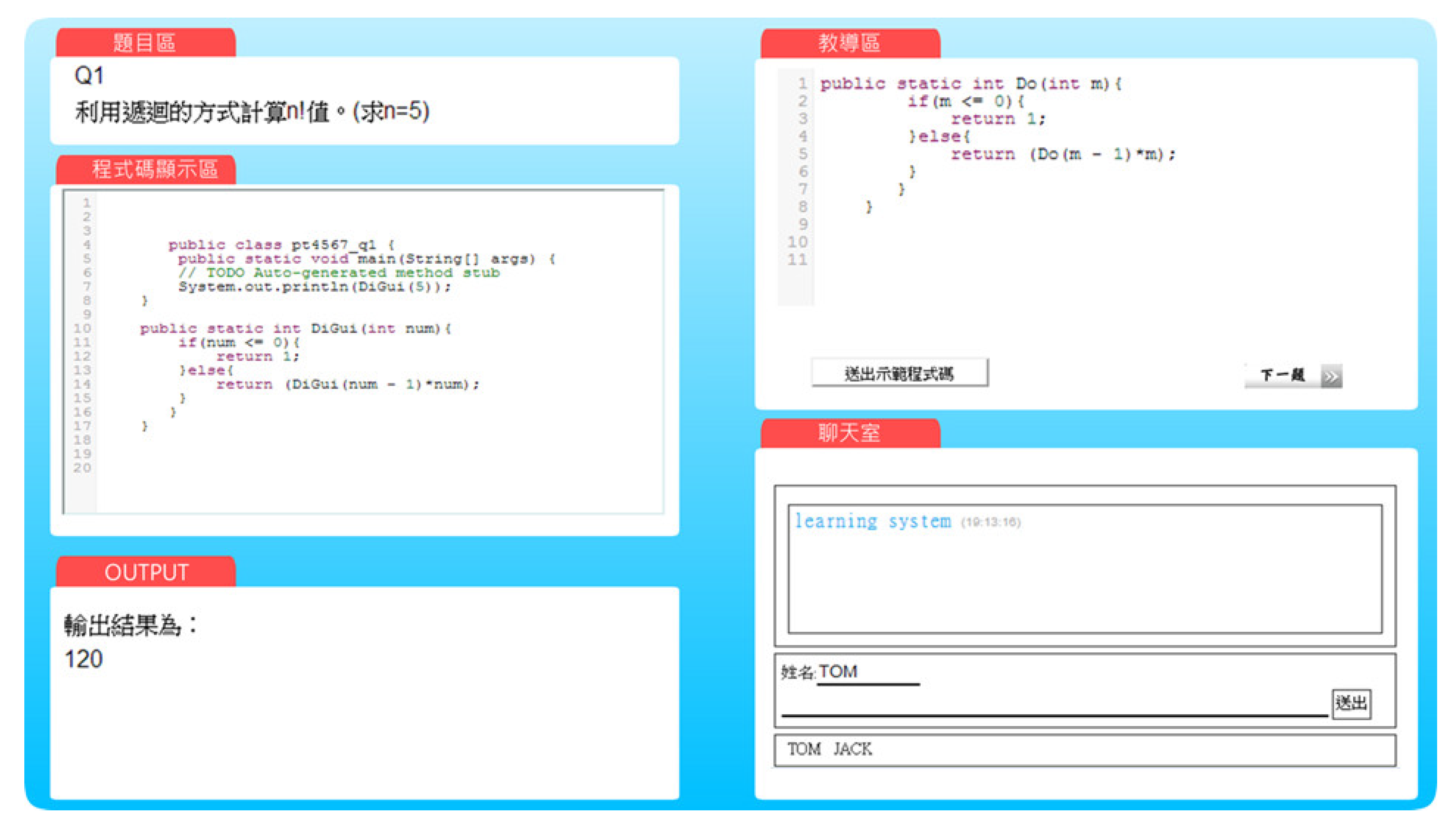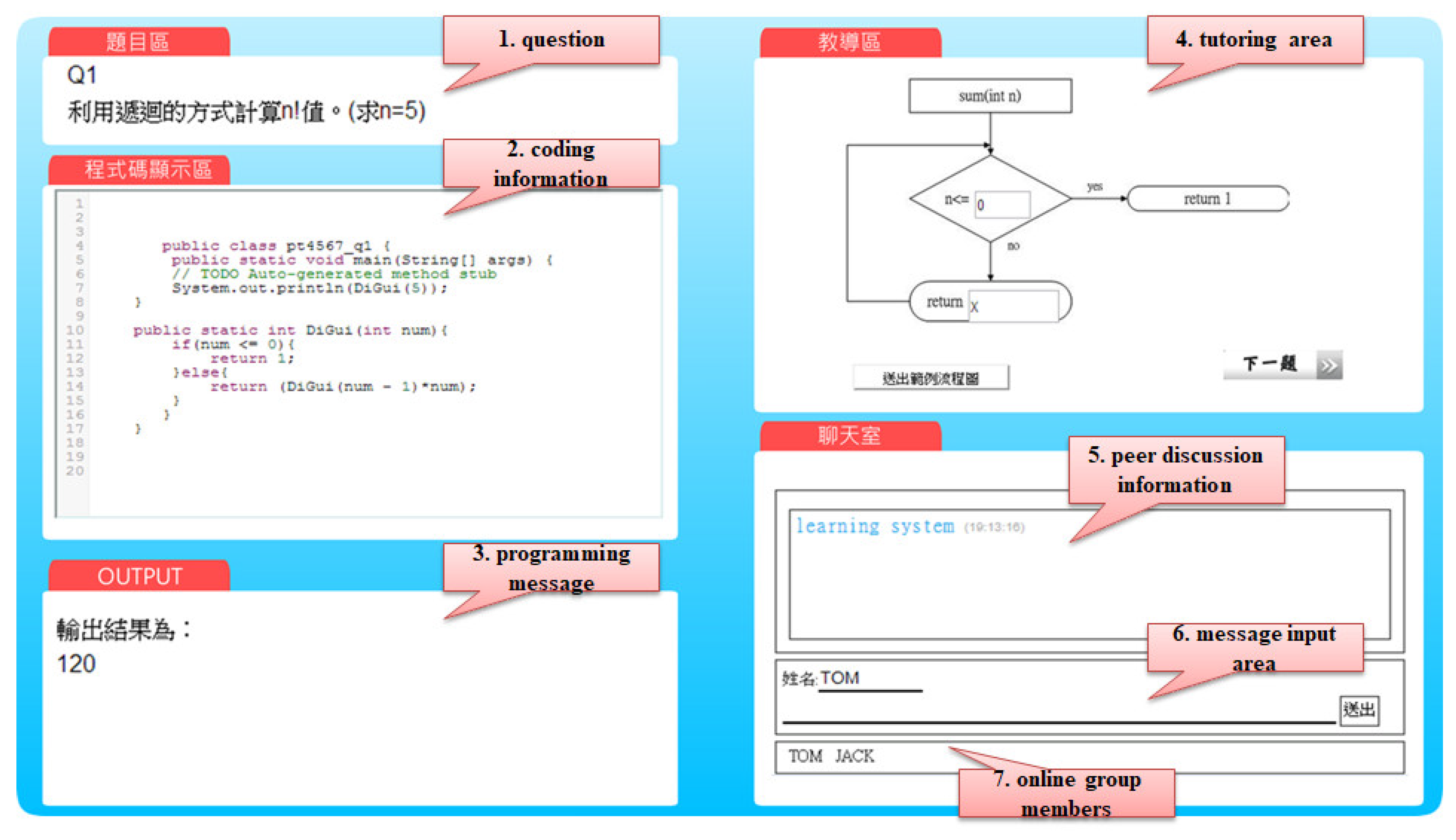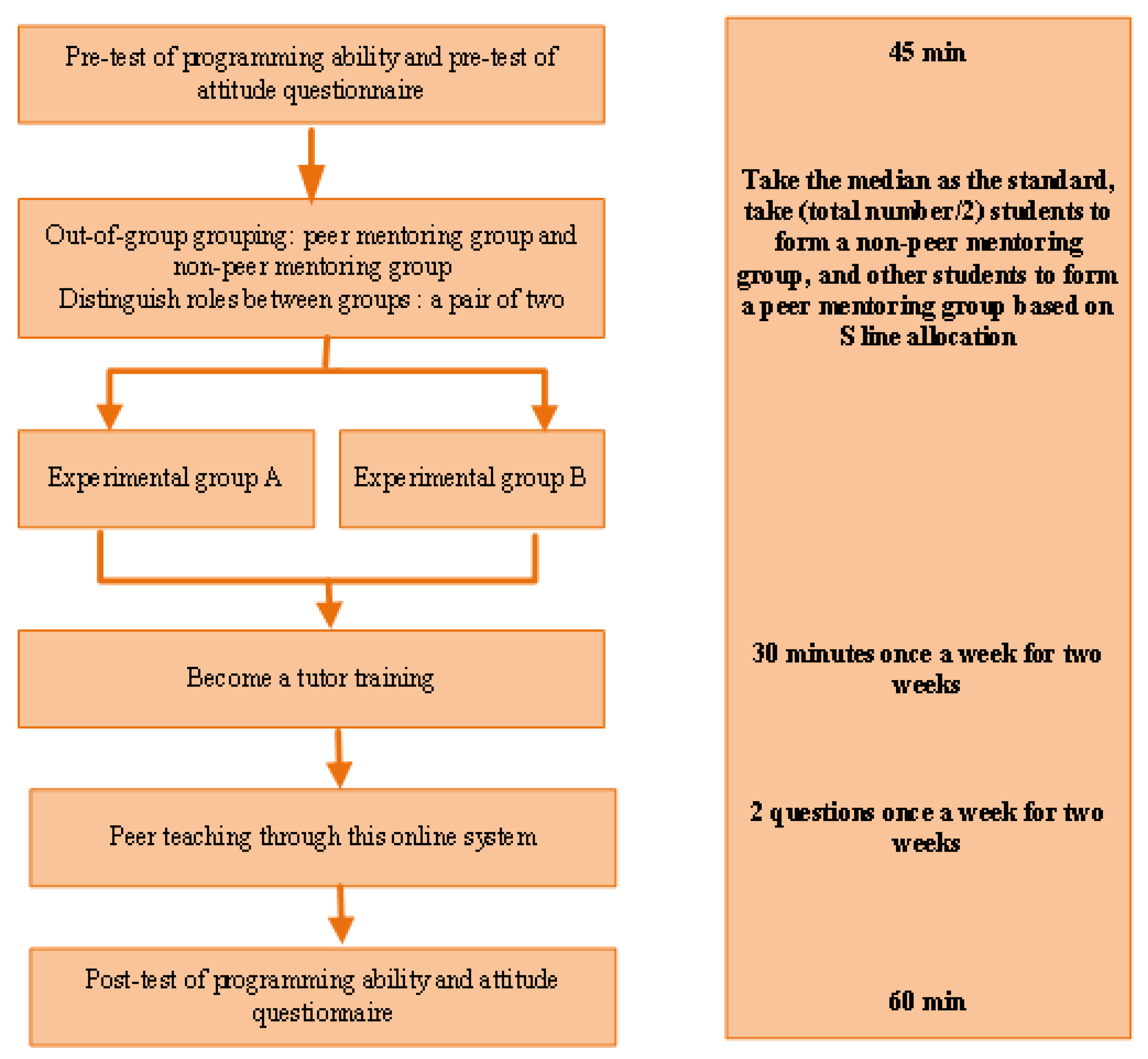This study was conducted on a group that used the peer tutoring system and a control group that did not use the system. At the same time, this study has different teaching functions, which can be provided to the role of mentor in peer-to-peer learning, so that the teaching effect of peer-to-peer learning can be further significantly improved. There are also further discussions of the experimental results in
Section 5 of this study. In the experimental results and analysis of
Section 5, this study explores the significance of the experimental results for learning from different aspects of the e-learning. This chapter will make further comparisons and discussions based on the data from different experiments in
Section 4. According to the experimental data in
Table 2,
Table 3,
Table 4,
Table 5,
Table 6,
Table 7,
Table 8,
Table 9,
Table 10,
Table 11,
Table 12 and
Table 13 below, further discussions and explanations are made on the significance of the peer learning and teaching effect.
The experimental hypotheses and data are separately analyzed in this chapter. The following hypotheses are further discussed in the sections of prior knowledge, learning achievement, information coding, programming language attitude questionnaire, and system questionnaire.
5.2. Learning Achievements
The students took the post-test after the learning activities. Based on
t-test analyses in
Table 3, the mean of the post-test for Experimental group A is 70.96, the mean of the pretest is 35.92, and
p 0.00 < 0.05, reaching significance. Based on
t-test analyses in
Table 4, the mean of the post-test of Experimental group B is 62.69, the mean of the pretest is 34.62 and
p 0.00 < 0.05, reaching significance. Based on
t-test analyses in
Table 5 and
Table 6, the tutors in both groups present
p 0.00 < 0.05, achieving significance, and the tutees in both groups show the significance
p 0.00 < 0.05, achieving significance as seen in
Table 7 and
Table 8. Consequently, the results of both groups show remarkable progress after the learning activities, and both the tutors and the tutees present significant progress. Therefore, students’ learning achievement in programming languages is enhanced after the online peer-tutoring platform for programming languages, and both the tutors and tutees made significant progress. “Teach and Learn” is therefore achieved.
- 2.
The groups with Demonstration and Flowchart reveal differences in learning achievement.
Based on
t-test analyses in
Table 9, the mean of Experimental group A is 70.96 and that of Experimental group B is 62.69, and the
p 0.04 < 0.05, reaching significance. Therefore, the online peer programming language learning activities with Demonstration present better results than those with Flowchart.
However, the main emphasis of this study is that peers play the role of teaching and guidance, and how the peer tutor uses different peer teaching skills and guidance methods to let the tutee learn more effectively. At the same time, after the peer teaching process, the tutors also made obvious progress in the post-test scores, which shows that the tutors have really internalized the program knowledge in the teaching process. This is the main difference of this research.
- 3.
The peer mentoring and non-peer mentoring groups in Experimental group A show significant differences in learning achievement.
With t-test analyses, the mean of the peer mentoring group in Experimental group A is 72.08 and that of the non-peer mentoring group is 70.00, and p 0.60 > 0.05, not achieving significance. Therefore, the peer mentoring and the non-peer mentoring groups using Demonstration for the online peer programming language learning activities do not show remarkable differences in the learning achievement, possibly because the 30-min learning activities for two questions are not sufficient for group discussions and practice.
- 4.
The peer mentoring and the non-peer mentoring groups in Experimental group B present remarkable differences in learning achievement.
With t-test analyses, the mean of the peer mentoring group in Experimental group B is 57.50 and that of the non-peer mentoring group is 57.14, and p 0.20 > 0.05, not achieving the significance. Therefore, the peer mentoring and non-peer mentoring groups using Flowchart for the online peer programming language learning activities do not present significant differences in the learning achievement, possibly because the 30-min learning activities for two questions are not sufficient for group discussions and practice.
- 5.
The peer mentoring group with Demonstration or Flowchart presents significant differences in the learning achievement.
With
t-test analyses in
Table 10, the mean of the post-test of Experimental group A–Peer mentoring group is 72.08 and that of Experimental group B–Peer mentoring group is 57.5, and
p 0.06 > 0.05, not reaching significance. Nonetheless, the mean of Experimental group A is higher than that of Experimental group B, and the chat room records reveal that the students in Experimental group B still use Demonstration for the learning activities because Demonstration is more proper for the online peer programming language learning activities.
- 6.
The non-peer mentoring group with Demonstration or Flowchart shows significant differences in the learning achievement.
With
t-test analyses in
Table 11, the mean of the post-test of Experimental group A–non-peer mentoring group is 70.00 and that of Experimental group B–non-peer mentoring group is 67.14, and
p 0.42 > 0.05, not achieving significance. Therefore, the non-peer mentoring group with Demonstration or Flowchart does not show significant differences, possibly because the non-peer mentoring students do not show large differences in learninglevel.
5.4. Sequential Analysis
The messages in the chat room during the online peer programming language learning process are coded, where the acquainted peer is coded as A, tutor preceding low-level instruction, such as User1: “You miss a } at the end” as B, tutor preceding high-level instruction, such as User1: “When it is an odd number, return n + fun(n − 2)” as C, tutee proposing questions or looking for solutions as D, and irrelevant response as E; the coding reliability Cronbach’s(α) = 0.92. Information coding is further preceded by sequential analysis, proposed by Hou, Sung, and Chang [
29], the significance of the Z-test (in short Z) is used in describing the information sequence, which is further transferred into a graph as the learning behaviors of each group. Each circle in the graph represents the information codes, and the wider line presents the more significant transfer of information. Z larger than 1.96 shows the achievement of significance. The learning behaviors of the groups observed from the information coding are shown as follows.
Preceding the experience of using peer tutoring platforms for programming languages, the learning behaviors of each group are almost the same. The tutors in each group present continuous concerns to the tutor preceding high-level instruction, revealing the frequent tutoring of most tutors on error messages, e.g., User1: “When it is an odd number, return n + fun(n − 2)”. In addition, the learning behaviors of the groups will transfer between a tutor applying high-level instruction and tutee proposing questions or looking for solutions, presenting a bi-directional communication between tutors and tutees. When a tutee actively asks questions, the tutor will provide guidelines or solutions oriented to the question, rather than unilateral tutoring. From the learning behaviors, it was also discovered that most tutors provided complete codes or solutions for the tutee’s questions; the tutees, therefore, made fewer low-level programming errors. The tutors, therefore, did not show notable tutoring preceding low-level instructions. Moreover, each group is likely to precede high-level instructions with an irrelevant response, possibly because the tutees will engage in irrelevant dialogues when waiting for tutoring, e.g., User 3: “User1, you are great.” Each group presented continuous use of irrelevant responses; however, the peer mentoring group in Experimental group B showed highly continuous use of the irrelevant response (Z = 18.32) This situation could influence learning achievement.
Finally, the tutors in Experimental group B use Flowchart as the tutoring method; however, they applied Demonstration to the tutoring when some tutees understood the logic of Flowchart. From the post-test learning achievement, it can be inferred that, using Demonstration in peer tutoring for programming languages could enhance the learning achievement of the students with lower levels.
5.5. System Satisfaction
Five dimensions were covered in the learning platform questionnaire, namely system quality, perceived usefulness, perceived ease of use, system satisfaction, and intention to use. With Likert’s seven-point scale, Extremely agree is marked 7, Agree 6, Slightly agree 5, Ordinary 4, Slightly disagree 3, Disagree 2, and Extremely disagree 1. The analyses show that, the mean of system quality is 4.33, implying that most students regard the platform with favorable quality. The mean of perceived usefulness is 4.74, revealing that most students agree with the programming language ability being enhanced by the peer-learning platform for the programming language. The mean of perceived ease of use is 5.20 showing that the platform provided a simple system interface for easy operation. The mean of system satisfaction is 4.68, revealing the satisfaction of most students. Finally the mean of intention to use is 4.32 revealing the students’ positive attitudes towards learning with the platform.
